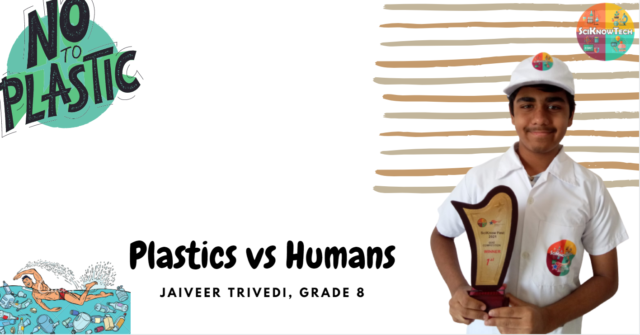Young Science Writers’ Program 2019
We, as humans, are throwing more than 8 million tons of plastics into the oceans every year. Owing to the wastage as well as the pollution created, we are responsible for the maximum damage suffered by the environment. Because of the irresponsible disposal of plastic into the oceans, over one million marine animals die annually!
Let us first briefly trace back to the origin and history of plastic. First invented in 1907 by Leo Hendrik Baekeland, a Belgian-born American, living in New York state, plastic had not only economic benefits but also practical reasons at the time of its invention. The material that Baekeland invented is commonly known as Bakelite – “a material of a thousand uses.” The plastic could be moulded into many shapes and it did not soften after returning to room temperature. Hence, the possible usages of the material were innumerable!
Plastics are synthetic materials made up of Carbon, Hydrogen, Oxygen, Nitrogen, Chlorine, and Sulfur. All of these gases are very harmful to humans as well as to animals. Consumption of plastic leads to the death of many animals every day. Many animals ingest the plastic thrown on the street-sides, thereby intaking many toxic chemicals. Furthermore, microplastics (small pieces of plastic) are often consumed by smaller animals like fishes in the sea which affects their reproduction, leads to diseases, and often ends in a fatality. It is quite surprising to note that a sperm whale, recorded dead on a shore, had died as it had eaten more than 1,100 pounds of plastic!
The material harms almost every natural body existing on the planet – on land, it makes the soil less fertile; in the water, it chokes the ponds, rivers, and oceans as well as kills the sea life; when burnt, it releases toxic gases in the atmosphere!
Even if plastic production cannot be stopped completely, we definitely can do our part towards a better future. We should use the 5R’s – Refuse, Reduce, Reuse, Repurpose, Recycle. By refusing to use plastic; by reducing the wastage, usage and disposal of plastic; by reusing, repurposing and recycling the existing plastic, we can save our planet and make it into a better place to live in.
Written by Jaiveer Trivedi (Grade 8)
Edited by Sofiya Shahiwala


